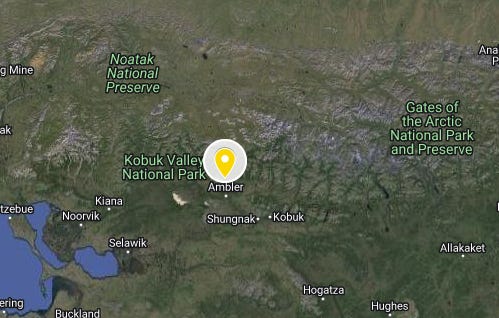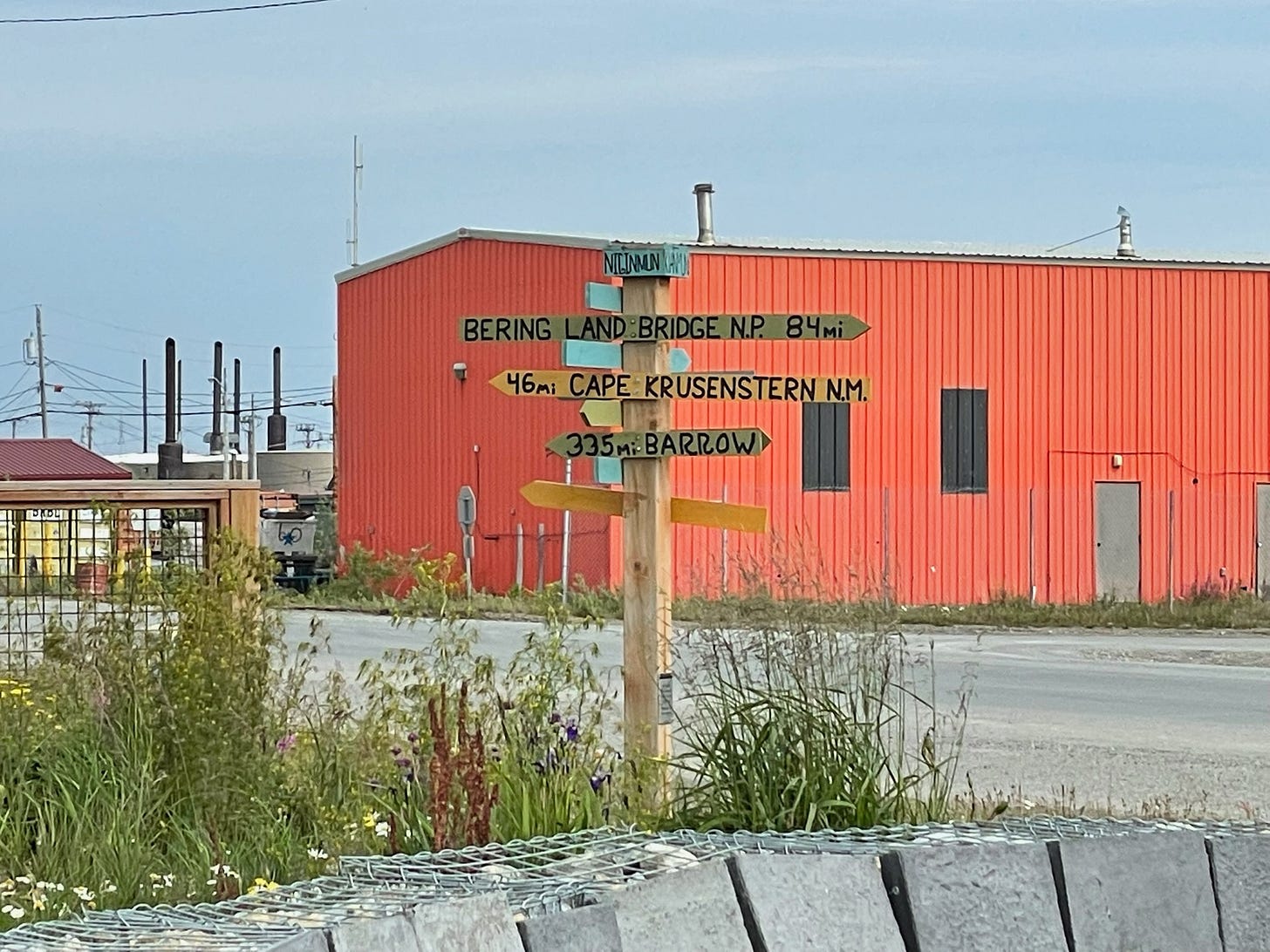Off-Grid: Interior Alaska
North to the Future
July 2021
In a land so vast in area as Alaska, figuring out precisely where to go is overwhelming. My family and I visited south central Alaska on previous trips, so we decided to try the state's interior. To find a place to stay, I applied a straightforward criteria:
Needed to be remote
Have a fun activity (fishing)
Didn’t require sleeping in a tent
Ambler seemed to fit the bill.
Click here to open a navigable map to see the area.
Ambler, AK
Ambler is a town of 274 people located 45 miles north of the Arctic Circle. We flew an Alaskan Airlines jet from Anchorage to Kotzebue to get there. From there, we boarded a ten-passenger Cessna Grand Caravan to Ambler.
Ambler is one of a handful of Northwest Arctic Borough communities on the Kobuk River. In a previous Next Adventure newsletter, I wrote about Sheefish and mentioned the Ambler Road, a contentious project being considered (and, as of this writing, appears to have been stopped).

The Kobuk River winds 285 miles from Walker Lake (located in Gates of the Arctic National Park and Preserve) to the Pacific Ocean.

Would I Return to the Interior?
With such a large state, it's risky to overgeneralize.
Geographically speaking, a useful way to think about Alaska is this:
Imagine the state of Vermont- that’s Anchorage and all the areas around it that can be accessed via the road network. This is where most people in the state live. Many parts of Anchorage appear no different than any other sprawling town of the American West, expanding haphazardly with big-box stores and chain restaurants.
Now, take that area the size of Vermont and add 70 more Vermonts; that’s Alaska—the equivalent of 71 Vermonts.
The south central part of Alaska has some of the most iconic locations, with dramatic mountains, wildlife, and coastline.
The interior of Alaska is a little different. There’s a lot to see, but fewer people and less tourism infrastructure. I found the interior beautiful and its remoteness exciting, but not everyone feels that way.
When I told an Alaskan friend from Kodiak that I was going into a fly-in community in the northern interior, he warned me that it would appear more like a poor area of the deep south of the lower 48 than my experience thus far in south central Alaska. He also said I should bring freeze-dried meals as a backup in case our lodging didn’t “work out” and we ended up stranded “somewhere” for a few days.
Gulp.
Our stay worked out, but I understood his point after visiting.
Tourism in the unfamiliar
The spectacular scenes of the south central region are inhabited by a booming tourism industry that meets all a traveler’s needs, spanning the spectrum from rugged camping to fancy hotels. The interior of Alaska, on the other hand, has a beauty and authenticity that’s difficult for travelers to find elsewhere, and resultantly, it’s less comfortable.
When I went to Bangladesh 20 years ago, there was a poster in the airport that read:
Bangladesh: Visit Before the TouristsOne may assume people in places like Kotzebue and Ambler want the tourism dollars of regions like the south central part of the state. But that may not be true.
As a traveler, the last time I felt as vulnerable as I did in interior Alaska was in South Asia, with both places sharing these characteristics:
Hours to days from comprehensive medical care.
Few/No alternatives if lodging/food plans fell through.
Highly reliant upon unfamiliar infrastructure (e.g., planes are the only way in/out, no cell service).
This raises an age-old question about tourism economies and the desires of those who live in these places. Natural beauty, experience, or authenticity leads to tourism, which eventually detracts (because of crowds, overuse, etc.) from the beauty/experience/authenticity that spawned the tourism to begin with (e.g., Vermont’s ski industry). I haven’t spent enough time in Alaska to know where it sits on this spectrum.
I’d return to the interior of Alaska, but it would be for a float/camp trip on one of the wild rivers (such as the Kobuk) or a self-sustained DIY-style hunt. For those visiting the state for the first time, the high density of dramatic beauty in south central and south east Alaska is probably your best bet.








